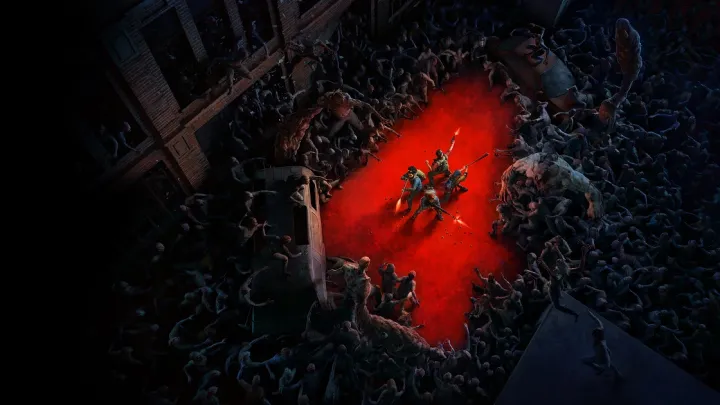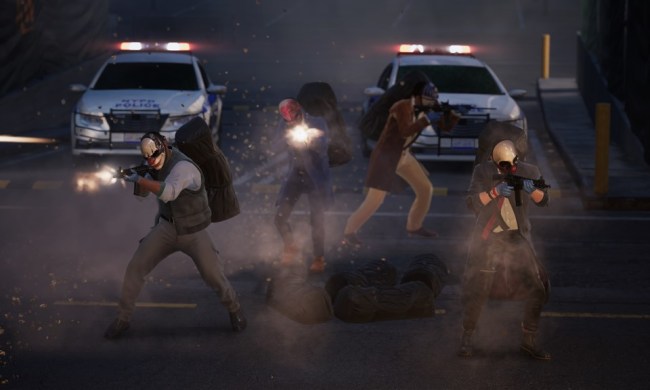Back 4 Blood is all about survivability, especially as you near the end game. With no background healing, players will have to manage their inventory and watch for wayward bandages, pain meds, and first aid kits while on a run. While some characters have passive healing abilities, you’re not always guaranteed to have those cleaners on your team (unless you assume the role of medic yourself). So how do you heal fast in Back 4 Blood? What are the best cards to play for maximum healing, and which Back 4 Blood characters will heal other players?
- Is Back 4 Blood cross-platform?
- How to remove attachments in Back 4 Blood
- How to kill the Hag in Back 4 Blood
How to heal in Back 4 Blood

There are several ways to heal yourself in Back 4 Blood. The most common and reliable way is to use whatever health item you’re carrying to patch up your wounds and dull the pain. These items include bandages, pain meds, and first aid kits. Your healing item is bound to the right D-pad button by default. If you’ve changed up your control scheme, you’ll want to double-check which button ties to healing. To use the item, press right on the D-pad and pull the right trigger (or whatever your shoot button is).
Be careful not to apply bandages or first aid kits in the middle of a fight. These items take time to use, and you’ll leave yourself vulnerable to attacks. Have your teammates cover you while you heal or retreat to a safe distance. However, no distance seems safe in Back 4 Blood, as several mutations can hit you with long-range attacks. How well does each item heal you, and how long does each take to apply?
Bandages
Bandages will heal you or a teammate for a base 25 health. They take two seconds to apply and are plentiful throughout each run. They are the fastest way to heal on the fly in Back 4 Blood but don’t heal as much as first aid kits. Use bandages between fights to keep yourself at max health, especially if you know an inevitable horde alert is up ahead. Don’t stockpile bandages, and don’t be cheap with bandages either. As long as you’re keeping a sharp eye out for supply bins, you’ll never feel like you’re running short.
First aid kit
First aid kits, on the other hand, are much harder to come by. You’ll most likely grab one from the buy box at the beginning of each chapter. We recommend buying as many first aid kits as you can carry. Purchasing the team support inventory upgrade will allow you to carry more. Mom can also carry +1 support inventory. First aid kits will heal 50 health but take three seconds to use. While three seconds doesn’t sound like a long time, it’ll feel like an eternity in the middle of a heated battle.
Only use your first aid kit when you’ve got the time between hordes or when a mutation deals a heavy amount of damage to you. Otherwise, grab nearby bandages or pain meds to keep yourself healthy during combat. Just don’t forget to pick up your first aid kits after the fight. Furthermore, don’t be a selfish teammate and steal another cleaner’s first aid kits when they drop them.
Pain meds
Pain meds grant what’s called temporary health, a mechanic Left 4 Dead fans remember all too well. Temporary health drains over time, ultimately leaving you where you started. Pain meds grant 40 temporary health but can be used instantly, making them the fastest way to heal on the fly, albeit only for a short while.
While the temporary health boost will save you in the middle of a fight, you’ll still need to find a way to recover your health afterward. For that reason, never head out on a run with pain meds in your back pocket. You’ll find plenty throughout each level to use in a pinch. First aid kits are far more valuable and rare.
Med cabinets
While on a run, you’ll come across med cabinets hidden throughout the level. You’ll find them off the beaten path, so make sure to explore each area carefully, especially if you’re low on health. If you don’t find a cabinet, you’ll probably find some pain meds or bandages lying around. You’ll often find them behind locked doors that require tool kits to open. These cabinets will fully heal you, but they only have a limited number of free charges. They will also heal a little bit of trauma damage.
You’re free to hit the cabinets again and again, but it’ll cost you 400 copper each additional time. Med cabinets will save you in a pinch when you find one, but they won’t always be in the same spot on each run. Don’t forgo healing yourself on the off chance that you’ll come across a med cabinet; it’s not always guaranteed.
Buy box
Before the start of each chapter, make sure to heal yourself at the buy box. It only costs 100 copper, and it’s the first step every cleaner should take before leaving the safe room. You’ll find the buy box heal under the Refills category. It’s the first option (which should be enough of a hint). Don’t waste your healing items if you’re low on health and about to enter a safe room. Every safe room comes with a buy box, so you can always get back to full health before starting the next chapter.
How to heal trauma in Back 4 Blood

Trauma is a new health mechanic in Back 4 Blood that caps your overall health as you take damage over time. Basic healing items won’t recover trauma by default. To heal your trauma, you’ll have to find a med cabinet or make it to the safe room. Making it to the safe room will only heal some of your trauma if you have the right cards equipped. We’ll go over the best cards to play for health purposes later on. Med cabinets only heal a portion of your trauma too. You’ll have to hit it several times to fully recover, which will ultimately cost you 1,000+ copper.
You’ll accumulate trauma as you take damage over time. Taking damage from normal zombies won’t leave too many lasting scars, but a devastating attack from a Tall Boy or Hag will leave you with some serious trauma. Going down also handicaps your health. You’ll know how much trauma you’ve accumulated by the black portion of your health bar. You’ll also see your health capped. Pain meds will override trauma, but the health will eventually deplete over time. Your trauma will remain unchanged.
Healing cards and abilities

We’ve gone over the default ways to heal yourself, but how can players stack their decks and cleaner teams to maximize healing potential?
Essential cleaners
If you’re looking to go deep in Back 4 Blood, there are two essential characters that you’ll have to run to maximize your healing potential. Doc and Mom are must-have members of your team, but what makes them primary cleaners?
Doc
Doc can heal teammates for 25 HP without using her healing items. However, she can only do this once per level. While she’s basically a bonus bandage for every cleaner, she’ll also boost trauma resistance by 25%, which is arguably better than the 25 HP. She also boosts her own healing efficiency by 20%, meaning her base first aid kits will heal 60 HP instead of 50.
Mom
Once per level, Mom can instantly revive a downed teammate. She also grants every teammate an extra life, allowing them to be incapacitated one additional time. However, Mom’s most helpful passive ability is her extra support inventory slot. This, by default, allows her to carry a spare first aid kit. As the cleaners progress and buy more support boosts from the buy box, Mom will quickly become the first aid pack mule of the team.
Healing cards
The following cards will boost your personal or team healing in one way or another. Stacking them together will increase your survivability. Keep in mind, the following cards do not include ones that increase damage resistance or boost max HP. While there are plenty of cards that make you stronger, we’re more concerned with the ones that’ll heal you more effectively. Damage in Back 4 Blood is inevitable.
- True Grit – When you take a single hit for 15 or more damage, heal eight health over five seconds.
- Battle Lust – Melee kills heal two health.
- Face Your Fears – Gain three temporary health whenever you kill a ridden within 2 meters.
- Fresh Bandage – Heal 10 Trauma Damage at the start of each level.
- Buckshot Bruiser – When using a shotgun, gain temporary health for each pellet that hits.
- Medical Expert – +15% healing efficiency. When you use a medical accessory, gain 15% move speed for 15 seconds.
- EMT Bag – +40% healing efficiency, –20% stamina efficiency.
- Charitable Soul – Healing a teammate also applies 50% of the effect to you.
- Medical Professional – First aid kits and defibrillators also recover 15 Trauma damage and one extra life.
- Shoulder Bag – +2 support inventory, –10% damage dealt.
- Saferoom Recovery – Your team heals five trauma damage and refills 10% ammo at the start of each level.
Of the cards mentioned above, one valuable healing combo is Battle Lust and Face Your Fears. Since all of your melee kills will be within 2 meters, you’re effectively healing for five health with every melee kill. Even though three are temporary, a melee-focused deck will keep you healthy against regular zombies. You’ll still need to pull out the big guns for mutations, though.
We also like EMT Bag over Field Surgeon because Field Surgeon comes with a –50% debuff to use speed. Unless you counter that with the Multitool card (+75% use speed), the minor stamina debuff is easier to manage.



